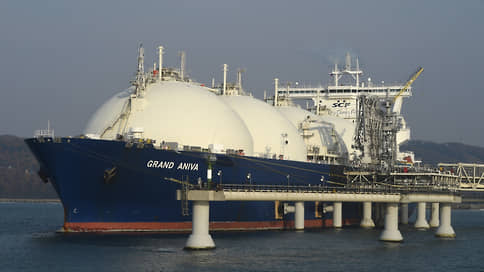LNG exports in 2023 decreased by 2%
[ad_1]

Russian LNG plants produced 32.33 million tons of LNG in 2023, which is only 2% lower than a year earlier. The decrease is due to the summer repair campaign on the Yamal LNG and Sakhalin-2 liquefaction lines, which was partly offset by the launch of a new medium-scale LNG project in the Baltic. In December, LNG exports reached 3.2 million tons, the highest level in 2023. Exports to Europe at the end of the year slightly exceeded the figures for 2022, reaching 16.42 million tons, but analysts expect a reduction in supplies in 2024.
The production volume of Russian LNG plants in 2023 amounted to 32.33 million tons, which is only slightly inferior to the 2022 figure of 33 million tons of LNG, according to Kpler data. Total LNG production in the Russian Federation in December became the highest ever, reaching 3.2 million tons, which is 7% higher than in December 2022. Russian LNG exports to Europe reached 1.76 million tons in December, repeating the historical peak values of November.
In December, LNG exports to Japan from Gazprom’s Sakhalin-2 project increased: Japan in October-December, according to Victor Katona from Kpler, for the first time fully restored imports from Sakhalin to the level observed before February 2022. In December, exports to Japan from Sakhalin-2 reached 0.7 million tons, which is almost 20% higher than a year earlier.
The increase in supplies to Europe in December, in his opinion, can be explained by a decrease in demand for LNG in Asia: in early November, severe cold set in in China, but after that the temperature increased, and during November-December the demand for gas was weaker than initially expected . “China had initially high gas reserves, so demand from buyers was relatively weak in December,” he explains.
On December 27, Deputy Prime Minister Alexander Novak predicted LNG production in the Russian Federation at 33 million tons. He estimates that this is about 8% of the global market and fourth among exporting countries after the United States, Qatar and Australia.
According to Kpler, NOVATEK’s Yamal LNG LNG plant produced about 19.88 million tons of LNG at the end of 2023, compared to 21 million tons a year earlier, over 70% of shipments from the site went to Europe. Sakhalin-2, focused exclusively on the Asian market, produced 10.2 million tons versus 11.5 million tons a year earlier. In 2023, both LNG plants reduced output during the summer months due to planned repairs, which is why their export volumes began to recover only in October.
NOVATEK’s medium-tonnage Cryogas-Vysotsk plant increased shipments by 7.5% year-on-year in 2023, to 0.76 million tons of LNG. Gazprom’s Port LNG plant, which began operating just over a year ago, shipped 1.47 million tons.
The main buyers of Russian LNG in Europe in 2023 were Spain and Belgium, purchasing 5 million tons each, as well as France with 3.67 million tons. In Asia, the largest shipments were to China – 6.7 million tons, Japan – 6 million tons, South Korea – 1.7 million tons. In total, 16.42 million tons of LNG were shipped to Europe, including Turkey, in 2024, compared to 16.25 million tons a year earlier, and 15.48 million tons to Asian countries, compared to 16.48 million tons in 2022.
Until now, Europe has not imposed sanctions on the purchase of Russian LNG, with which EU countries partially compensate for the decrease in Russian gas supplies through pipelines. But the first restrictive measures are beginning to be discussed: for example, in the future, EU countries may receive the authority to prohibit Russian suppliers from accessing LNG terminals. In the meantime, European Commission officials are calling not to enter into new long-term contracts with Russian companies. In addition, the United States last year imposed sanctions on NOVATEK’s new Arctic LNG 2 project, which will complicate supplies from it, especially to Europe.
China in 2023 regained its title as the world’s largest buyer of LNG, purchasing about 71 million tons, which is 12% more than a year earlier, Bloomberg writes. Further growth in demand in the country in the absence of new LNG production capacity on the world market could provoke a price war for cargo with Europe, whose gas supply is now largely dependent on LNG.
Sergei Kondratyev from the Institute of Energy and Finance remains optimistic about the sector’s prospects in 2024, expecting LNG production in Russia to rise to 35.8–36.1 million tons: this takes into account the average annual load of the first line of Artik LNG-2 at 40 –45%. “I think that in 2024 we will see a decrease in exports to the EU due to the ongoing reformatting of the European market, stabilization of gas prices at a relatively low level and increased sanctions pressure,” he believes. The analyst believes that shipments to Europe by the end of 2024 could fall to 12–13 million tons.
[ad_2]
Source link





